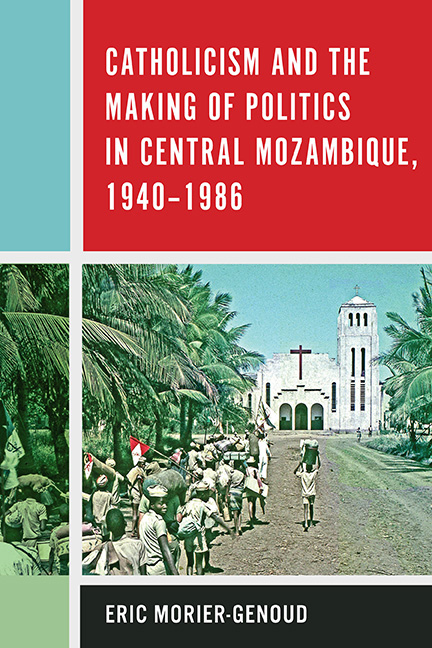Book contents
- Frontmatter
- Dedication
- Contents
- List of Illustrations
- Acknowledgments
- Note on Translations
- List of Abbreviations
- Introduction
- 1 The Making of the Diocese of Beira
- 2 Diversity and Dynamics of the Imperial Church
- 3 The Formation of an African Church
- 4 Gathering Storm: Vatican II Meets African Nationalism
- 5 Decolonization? War, Implosion, and the Vatican
- 6 Independence: Revolution and Counterrevolution
- Epilogue
- Notes
- Bibliography
- Index
1 - The Making of the Diocese of Beira
Published online by Cambridge University Press: 28 June 2019
- Frontmatter
- Dedication
- Contents
- List of Illustrations
- Acknowledgments
- Note on Translations
- List of Abbreviations
- Introduction
- 1 The Making of the Diocese of Beira
- 2 Diversity and Dynamics of the Imperial Church
- 3 The Formation of an African Church
- 4 Gathering Storm: Vatican II Meets African Nationalism
- 5 Decolonization? War, Implosion, and the Vatican
- 6 Independence: Revolution and Counterrevolution
- Epilogue
- Notes
- Bibliography
- Index
Summary
The Vatican established the Diocese of Beira in 1940. Its founding marked a rupture in the way the church had been organized in the area until then and opened up a new era of Catholic development. It was the direct result of the signing of a Concordat and a Missionary Accord between the Vatican and the Portuguese government that same year. These international agreements aimed at establishing a harmonious relationship between church and state, both in the metropole and in the colonies. They set up a framework that allowed the church to expand but also controlled the way it could operate. Among others, they stipulated that the Catholic Church had to be structured into dioceses (and not vicariates) in the Portuguese colonies and that all bishops had to be Portuguese.
The coming pages aim to explicate the context and structuring of the Diocese of Beira as well as reveal the personality and orientation of the bishop of Beira beyond the “political paradigm.” Rather than investigate who benefited most from the alliance between church and state, the chapter analyzes the nature of the alliance between the two and investigates what the Catholic Church did thanks to (or in spite of) it. It looks at the the history and unfolding of the post-1940 church–state alliance, it investigates the training, personality, and inclinations of the first bishop of Beira, and it analyzes the overall achievements of the Catholic institution in Central Mozambique in terms of occupation, infrastructure, and personnel.
The Vatican, Portugal, and Beira
The history of the Catholic Church in Mozambique is one of grandeur in the sixteenth and seventeenth centuries, decline in the eighteenth century, and collapse by the mid-nineteenth century. The church set foot in southeast Africa in 1498 when a priest accompanying Vasco de Gama on his way to India disembarked on the Island of Mozambique. As the Portuguese proceeded to build forts in the region in the following decades, the Catholic institution built churches next to these fortresses and sent clergymen to serve there. Soon Jesuits and Dominican friars engaged in a broader evangelization drive.
- Type
- Chapter
- Information
- Publisher: Boydell & BrewerPrint publication year: 2019



